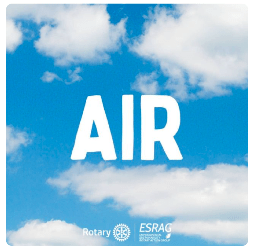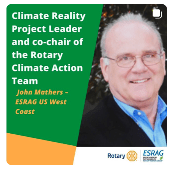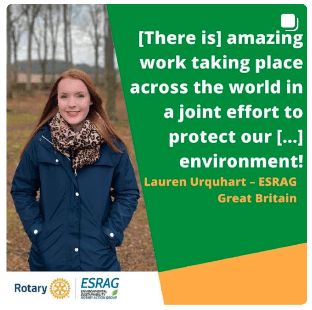RESOURCES
Global Grants
Resources to help you apply for an environmental global grant today.
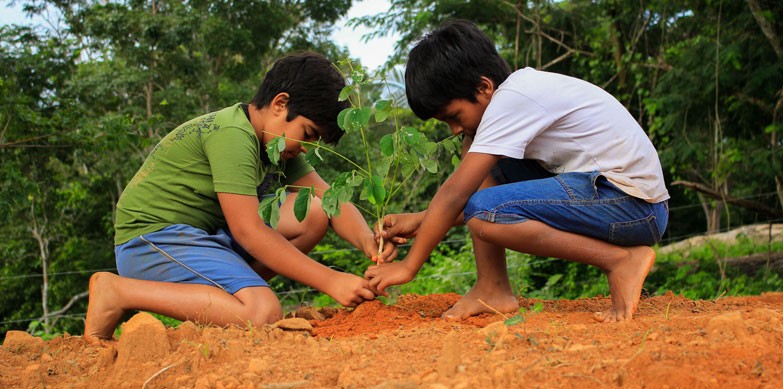
ENVIRONMENTAL GLOBAL GRANTS
How can we help?
Are you looking for the Environmental Sustainability Rotary Action Group (ESRAG) to help with your club’s global grant application?
ESRAG members are happy to share their technical expertise, guidance, and experience to help clubs and districts plan implement impactful environmental global grant projects. We are experienced Rotary members and nonmembers around the world who are dedicated to helping clubs and districts develop sustainable environmental projects.
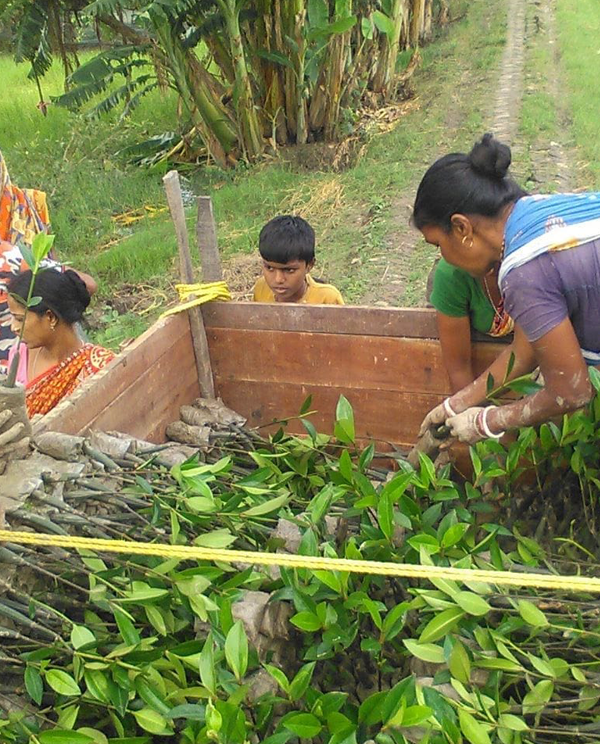
Useful documentation
This is where you’ll find the files and information you need to start on your global grant.
Four Environment Global Objectives
To be eligible for a global grant, a project needs to fit at least one of the four Rotary objectives for the environment. The guidelines include twelve Action Goals that applicants can address under the Objectives. Action Goals 1-8 are essentially the same as in the July 2021 policy statement. New action goals 9-12 invite applicants to address land use planning, enhancing environmental innovation, graduate school scholarships for environmental careers, and including the environment in Global Grant projects that advance other Rotary humanitarian Areas of Focus in protected natural areas. The policy’s interdisciplinary approach is most welcome.
Most noteworthy is the frequent discussion of advocacy, going beyond just education and awareness-building. Past RI presidents Ian Riseley and Barry Rassin have both encouraged advocacy in your local communities as part of Rotarian service. “When you attend a community meeting,” Ian says, “wear your Rotary pin; it will make a difference in how they listen when you speak.” The guidelines also underscore the importance of working with appropriate governmental agencies and NGOs in community assessment, permitting, funding, and institutionalizing the interventions of the project so that the change is long-lasting and sustainable. This is a departure from Rotary’s historic preference to develop projects without engaging government.
Here are The Rotary Foundation’s four ‘environment global objectives:
- Nature and Biodiversity Conservation: We need to strengthen biodiversity and ecosystems as we pursue food, water, shelter, consumption, and production, because “biodiversity loss affects our planet at every scale, and because we are connected ecologically [to] nearly every family of organisms.”
- Climate Change Mitigation by reducing human-caused greenhouse gas (GHG) accumulation in the atmosphere. GHGs include not just CO2, but also methane, and the CFCs family, which is less prevalent but more potent. Projects should reduce sources, support sinks, and prevent releases. Applicants are encouraged to work on nature-based solutions.
- Sustainable Livelihoods means shrinking our ecological footprint so communities’ economic wellbeing is protected by flourishing natural systems, healthy soils, safe water and climate adaptation.
- Environmental Equity means “having a clean, healthy, and sustainable environment to live in,” with an extra obligation to marginalized communities that suffer disproportionate impacts and/or have been historically disenfranchised.
Community Assessment: The First Step
A Community Assessment led by the host community is an ESSENTIAL first step to any Global Grant application. This policy spells out how to combine enquiry about the community’s goals and its cultural, technical, and financial conditions with an analysis of the specific environmental challenges. Effective training and education in support of your project should be in the local language and driven by needs identified in the community assessment. The assessment builds community buy-in. This assessment must drive your project plan.
The policy describes four key strategies to ensure environmentally sustainable projects:
- Respecting local and indigenous knowledge and sharing information collaboratively;
- Engaging the local environmental advocates as partners;
- Institutionalizing progress by working with appropriate government entities; and
- Ensuring adequate funding for the project and beyond so it will be self-sustaining beyond the grant term. Revolving loan funds are a possible source of support.
Significantly, the guidelines encourage working with relevant government agencies to develop the Community and Environmental Assessments.
Evaluation: It is essential to gather baseline data at the assessment phase, to be able to measure success throughout. ESRAG’s iRotree app, downloadable to your phone, can help you record that information. You will also need to identify environmental threats, cultural practices that should inform the project, and the environmental changes – both good and bad – that you expect. On pp.20-21, the policy gives detailed guidance around data collection for baseline, measuring interim progress to allow for revisions, and post- project results to enable improvement, sharing and scaling.
Applicants need to review land ownership around the intervention, the end-of-life management of technologies, and the impact of the project beyond its site.
Budget: The guidelines recommend that you spend more on people than hardware, hire local experts and technicians, and develop co-funding partners beyond Rotary. Source environmentally sustainable materials locally, being clear about ownership and management. Allocate 10% of your budget for evaluation.
Action Goals
Global Grant projects eligible for funding in addition to demonstrating one or more of the environment area global objectives (above), will match at least one action goal (below).
Action Goal 1: Hands-on conservation. Each project is very site- and context-specific. Replanting or rebuilding populations of appropriate native species can be combined with removing invasive species. Read pp. 18-19 for specifics on scientifically-sound, wholistic tree-planting and other plant projects, and strategies for preventing or removing plastics from waterways.
Action Goal 2: Community natural resource governance and management emphasizes projects to build capacity in local communities, including governments, grassroots, organizations, and NGO’s, and aligning with peacebuilding and conflict resolution initiatives.
Action Goal 3: Agriculture, fishing, and primary production includes funding for projects that promote regenerative agriculture and food security by reducing food waste and addressing food deserts. Consulting indigenous knowledge is important.
Action Goal 4: Climate, energy, and electricity lists small-scale renewable energy systems, energy efficiency projects, community solar, decarbonizing transportation by changing infrastructure, and land use planning. The guidelines include detailed advice around solar and household and consumer energy use initiatives.
Action Goal 5: Resilience and adaptation includes resilience strategies for the vulnerable and conservation strategies that anticipate climate-induced migration.
Action Goal 6: Environmental education and communication addresses targeted advocacy and strategic communication campaigns, including supporting environmental human rights. School-based education efforts should also align with Basic Education and Literacy guidelines.
Action Goal 7: Material life cycles and circular economy discusses recycling and upcycling, reducing food waste, and composting, and working upstream to reduce demand for plastics. Applicants must supply details about the economics and flow of materials to reduce waste.
Action Goal 8: Environmental public health includes reducing risk of exposure to toxins and improving access to nutritious food for vulnerable groups, as identified by project beneficiaries themselves.
Action Goal 9: Land use focuses on creating, maintaining and expanding protected areas including working with land trusts and conservancies. Rotarians can even create nature preserves.
Action Goal 10: Environmental innovation: Working with Community and Economic Development guidelines to create environmentally friendly rather than destructive income opportunities, including small scale eco-tourism. As with other goals, the project should include local capacity-building, not just supplying equipment.
Action Goal 11: Pages 21-23 list environmental careers eligible for Rotary graduate scholarships for those pursuing environmental studies. Indigenous students can apply for scholarships for graduate work on integrating environmental and Indigenous studies.
Action Goal 12: Guidelines for Rotary’s other six Areas of Focus (AOFs) have been updated to include ways to combine environmental sustainability with other Rotary humanitarian goals such as Peacebuilding, Disease Prevention, and Water, Sanitation, and Hygiene. If you see potential synergy with another AOF, read that AOF’s guidelines and consult the RI regional grant officer for the proposed project site to see how best to make the case for your Global Grant policy. The environment may be a secondary AOF if the project in support of a different AOF is located within or near protected natural areas.
Stay up to date.
Sign up for monthly updates from ESRAG to
get the latest news straight to your inbox.
Follow us & join the conversation.
#IFixThePlanet
